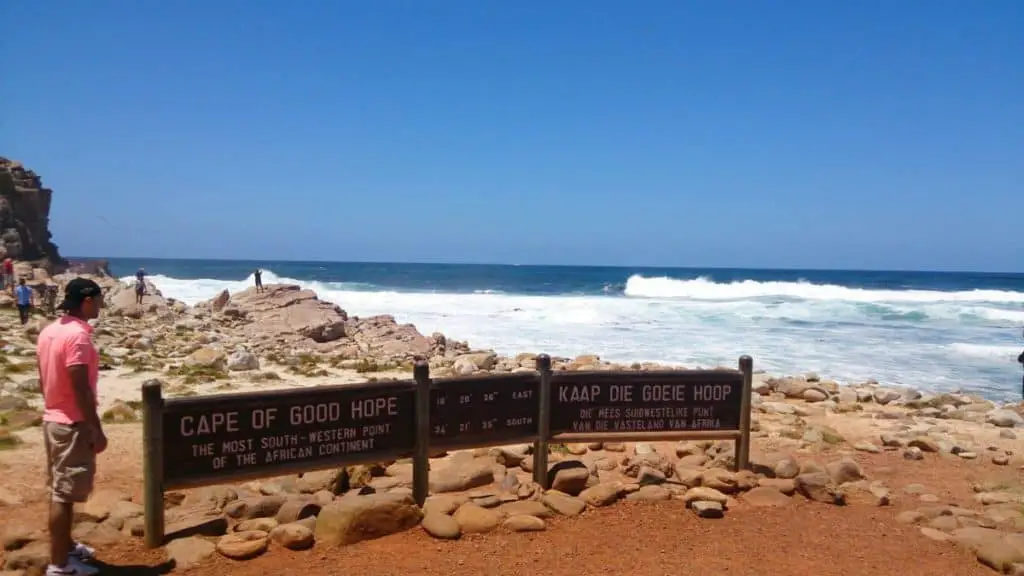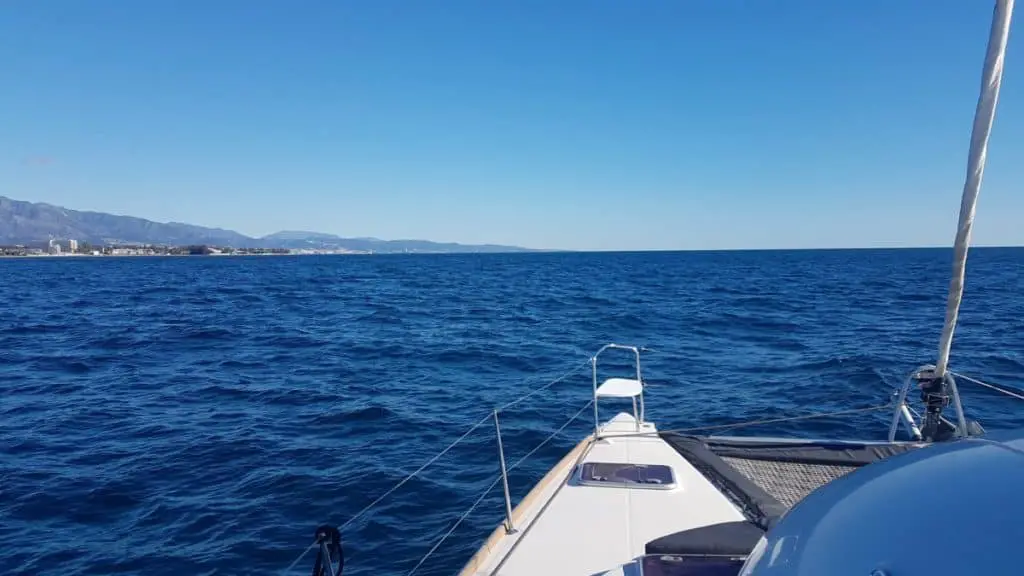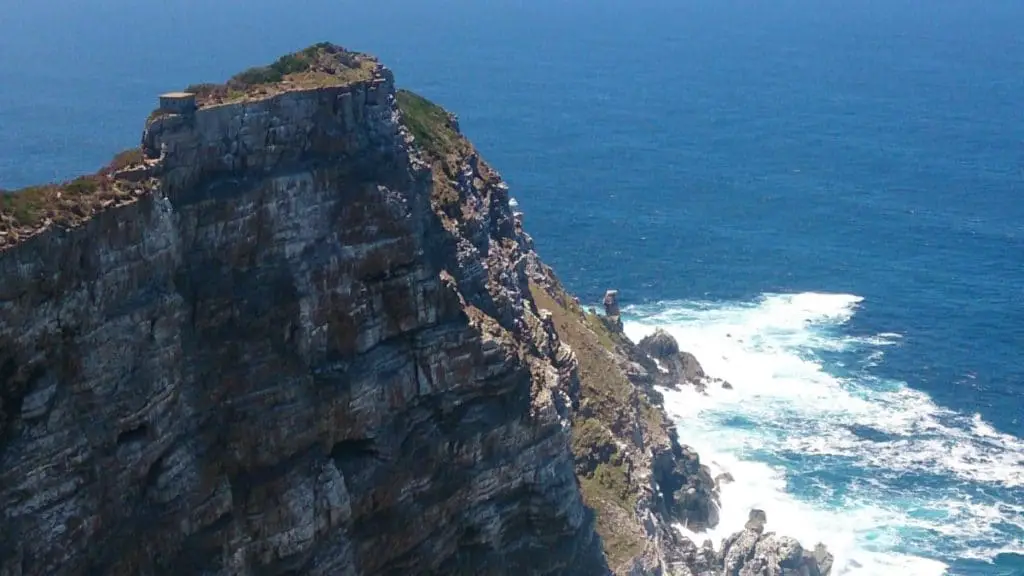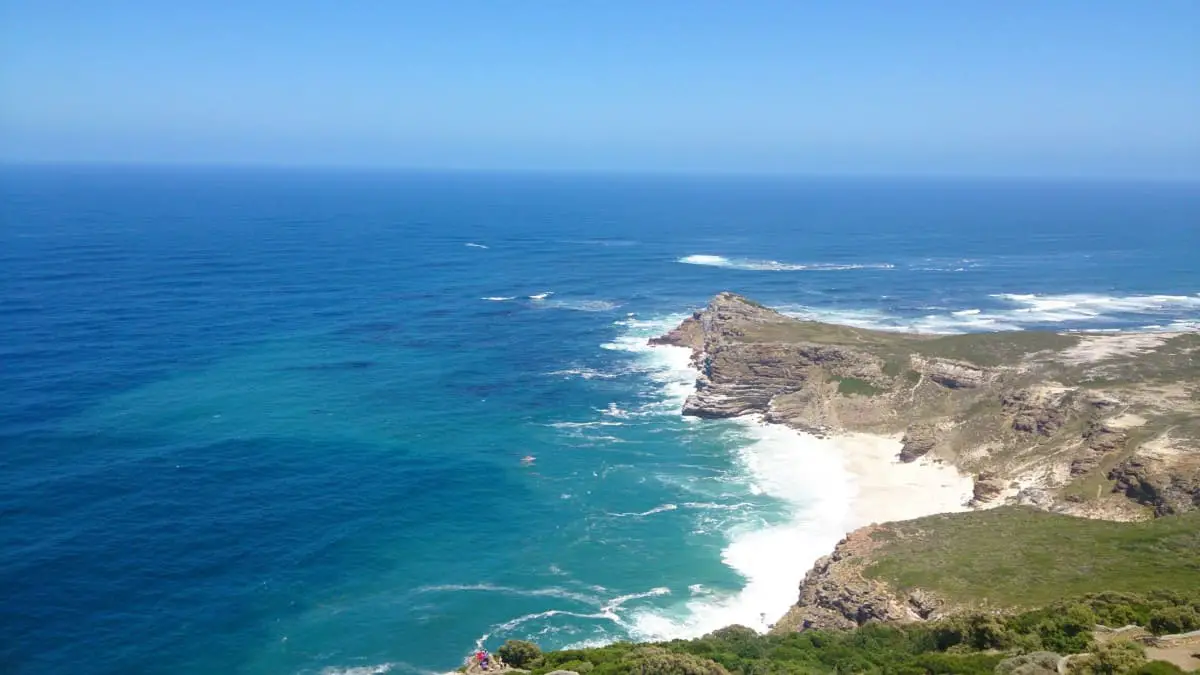As an Amazon Associate, we earn from qualifying purchases. We may also earn commissions if you purchase products from other retailers after clicking on a link from our site.
Are you wondering how the world’s cargo ships, yacht-racers, and daring sailors navigate around the continent of Africa? This journey is not a short one, and it’s also considered one of the more dangerous sailing routes. However, it is completely possible to sail around Africa.
Sailing around Africa is possible by using the Cape Route, which goes from the European coast of the Atlantic to the Asian coast of the Indian Ocean, around Africa’s southern tip. The trip is long and comes with many dangers.
The rest of this article will answer your questions about sailing around Africa, including how long it takes and why it is potentially dangerous. If you’re curious about this maritime journey, then read on!
Can You Sail Around Africa?
You can sail around Africa using the Cape Route or the Suez Canal. The Cape Route is the original path, but takes much longer and comes with more dangers than the Suez Canal. If you take the canal, you can cut off several weeks of travel time.
The Cape Route passes the Cape of Good Hope and Cape Agulhas. Portuguese explorer Vasco de Gama was the first person to complete this route in 1498. During the Age of Sail, it was used by European East India Companies.
The European colonization of Africa began with a few coastal outposts to support this route, with most of the Portuguese Empire being founded along the route.
The Cape Route stops along the following locations (beginning from Lisbon, Portugal):
- Gibraltar
- Madeira
- Tenerife
- Cape Verde
- Dakar, Senegal
- Saint Helena island
- Salvador, Brazil
- Luderitz, Namibia
- Cape Town, South Africa
- Zanzibar, Tanzania
- Mombasa, Kenya
- Malindi, Kenya
- Kozhikode, India
- Goa, India
When the Suez Canal opened in 1869, the Cape Route became less popular since the canal was safer. Today, the canal is not very suitable for sailing boats due to the prevailing winds, while the Cape Route is known for yacht races.
Some ships are too big to use the Suez Canal, so they must use the Cape Route. The Cape Route is the path cargo ships take if the Suez Canal is blocked, and there are even some companies opting to take this route to avoid the high fees of going through the Suez Canal.
What Is the Suez Canal?
The Suez Canal is a waterway in Egypt that divides Africa and Asia. It is an essential maritime trade route because it is the quickest link between Asia and Europe. About 52 ships pass through the canal each day.
Sailing around Africa would be an alternative to sailing through the Suez Canal, a man made waterway that goes from the Mediterranean to the Red Sea. It takes between 12 to 16 hours for modern ships to pass through the canal.
A French diplomat named Ferdinand de Lesseps founded the Suez Canal Company in 1859 and convinced the Egyptian ruler Sa’id Pasha and the Emperor of France, Napoleon III, to invest in the project. Egyptian peasants began making the canal by digging the channel by hand but were later given machines from Europe.
It took ten years, but in 1869, the canal was completed. After some conflict between European and Egyptian powers, the canal eventually came under Egypt’s control. It brings $5 billion to Egypt annually.
The Suez Canal is one of the world’s most important maritime trade routes because it is the fastest link between Asia and Europe.
Approximately 12% of all global trade passes through this canal and over $1 trillion worth of goods per annum. In 2020, around 19,000 ships passed through the canal.
The March 2021 Suez Canal Blockage
In March 2021, a container ship called the Ever Given blocked the canal for six days. The Ever Given is a massive ship, measuring approximately 1,312 feet (399.89 meter). The canal is quite narrow, only about 656 wide in some parts.
Ships were halted and backlogged at both ends of the canal, waiting to pass. This forced some ships to take the long way around the southern tip of Africa.
When the Ever Given got stuck, it was loaded with 17,600 containers carrying $1 billion worth of cargo, including furniture, Nike sneakers, and laptops.
Modern ships have radars and sensors that help them navigate the canal even in bad weather conditions, but a few miles into the canal, the Ever Given began to veer in the wind and crashed.
Sailing around Africa is the only suitable alternative to using the Suez Canal. When the Ever Given was blocking the Suez, shipping companies had to choose between waiting for the blockage to clear or rerouting around Africa.
How Long Does It Take To Sail Around Africa?
It could take anywhere from six to 31 days to sail around Africa. The amount of time it takes depends on the type of ship, how fast it’s going, and the type of cargo on board. The route you take also greatly impacts travel time.
The following table outlines how long it would take various ships to sail around Africa:
| Size and Type of Ship | Time | Compared to Suez Canal |
| 5 kts Sailboat | To go through the 4,200 mile-long (6,759.24 km) Cape of Good Hope, a sailboat going 5 kts would take approximately 30 days. | A 5 kts boat going through the Suez Canal would take approximately 21 hours. |
| 7 kts Sailboat | A 7 kts sailboat would take 525 hours to sail around Africa, or approximately 22 days. | Passage through the Suez Canal for a boat going 7 kts takes approximately 15 hours. |
| 9 kts Sailboat | A 9 kts sailboat would take 420 hours to sail around Africa, or approximately 18 days. | It would take a 9kts sailboat 12 hours to go through the Suez Canal. |
| Cargo Ship | Sailing around Africa, depending on the type of cargo ship and the load of cargo on board, can take 6-14 days. A ship going from the Persian Gulf to the Port of Rotterdam would take 31 days going through the Cape of Good Hope. | The average transit time of a travel ship through the Suez Canal is 13-15 hours. So, a ship going from the Persian Gulf to the Port of Rotterdam takes 18 days with the canal. |
There are different factors that impact how long it takes to travel around Africa. Larger ships can move faster than smaller ones. However, traffic can cause it to take several additional days. If a cargo ship has heavier freight, it also adds to the estimated travel time.
Overall, you can estimate how long it takes to travel around Africa, but it’s difficult to know an exact answer. The Suez Canal is the faster option, but trade traffic can slow you down significantly.
What Is the Cape of Good Hope?
The Cape of Good Hope is a cape on the south-western shore of South Africa, on the Cape Peninsula and in the Atlantic ocean. It marks when a ship begins to travel eastward instead of southward when sailing around Africa. It’s known for having rough waters and being tough to sail through.
The first European to reach the Cape of Good Hope was Portuguese explorer Bartolomeu Dias. He named it the “Cape of Storms” because of the tumultuous conditions. His expedition opened up the possibility of sea travel from Europe to Asia. Many merchants and explorers followed in his footsteps and John II of Portugal gave it its current name.
Why Is Sailing Around the Cape of Good Hope Dangerous?

Sailing around the Cape of Good hope is dangerous because of the wind and waves. Large waves over 16 feet (5 meters) are common. Plus, the intense wind speeds make it hazardous to travel under sail. The area is also very rocky and hard to navigate.
The Cape of Good Hope is one of the most common places for shipping accidents. Researchers estimate there are at least 2,000 shipwrecks in the Cape, which averages out to one wreck per kilometer of coastline.
The Cape of Good Hope’s conditions are so treacherous that it has even earned its place in folklore: the legend of the Flying Dutchman tells the tale of a ghost ship that is doomed to sail forever after being lost in a storm in the Cape of Good Hope.
Overall, only expert sailors should ever try to travel through the Cape of Good hope! It’s very dangerous, with the strong wind, high waves, and rocks. Only professionals have the needed experience and equipment to travel through without incident.
Why Is It Dangerous To Sail Around Africa?

Sailing around Africa is dangerous because of the weather conditions, traffic, rocks, and piracy threats. The Cape of Good Hope is one of the most dangerous sailing areas globally and is known as “the graveyard of ships.”
Sailing around Africa is dangerous because the Cape of Good Hope has violent, stormy conditions and huge waves, as well as high wind speeds. Because the Atlantic and Indian Oceans meet in this area, the warm Agulhas current and the cold Benguela current clash and cause extreme waves.
The weather in the Cape is also due to a southern airstream that goes around the circumference of the earth. This wind begins at a latitude of 40 degrees south. Because of this, the region is known as the “Roaring Forties.”
Conditions only get worse as the ships travel further south, earning the latitude of 50 degrees south the name “Furious Fifties” and 60 degrees south “Screaming Sixties.” This wind can easily push ships off course, and if ships are traveling against the wind, it could add weeks to their journey.
Another source of danger in sailing around Africa is pirates. Pirates prey on ships that move in the waters off the Horn of Africa, so this area is considered one of the most dangerous for shipping for that reason as well.
Sailing Around the World

Sailing around Africa is a necessary part of sailing around the world, which is an adventure of a lifetime that few get to experience.
Here are some ways that you can sail around the world:
- Join a crew. If you think this isn’t an option for you because you’ve never worked on a boat before, think again! Some captains take on crew members that don’t have experience, but you have even more options than you might think. Boats need deckhands, stewards, engineers, chefs, and more, so you can find a way you can be helpful.
- Join a research vessel. Many research vessels sail all over the world to study marine wildlife, and you don’t have to be a scientist to get on one of these boats. You can work as a deckhand or a cook.
- Care for children on board. If a family is sailing around the world, the parents might not have time to homeschool their children and tend to the boat, so they may opt to bring a teacher/nanny with them to teach and look after their kids.
Of course, you can also buy your own boat and captain it yourself. This requires a lot of experience, effort, and money.
The most common route when sailing around the world is the southern route going west. This route begins in the Mediterranean, crosses the Atlantic to the Caribbean, goes through the Panama canal, and then goes through the Suez Canal or Cape Horn.
Traveling the world on a sailboat will take a while. The shortest time recorded is 40 days, but it takes most sailboats between one and a half to five years to fully sail around the world. The amount of time it takes to accomplish this amazing feat depends on how much time you spend in each region and how fast your boat is.
Conclusion
Sailing around Africa is no small task, but the Cape Route is a possibility if the Suez Canal is blocked or the cost of going through it is too high. Although parts of this route are dangerous, it is still used today by cargo ships, yacht racers, and sailors. It also is one of the paths one could take to accomplish their dream of sailing around the world.
Sources
- New Zealand Foreign Affairs & Trade: The Importance of the Suez Canal to Global Trade
- SidmartinBio: How Long Does It Take a Boat to Travel the Suez Canal?
- National Geographic: The Suez Canal Blockage Detoured Ships Through an Area Notorious for Shipwrecks
- Earth Observatory: The Cape of Good Hope
- Bloomberg Businessweek: Six Days in Suez: The Inside Story of the Ship that Broke Global Trade


